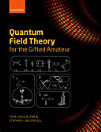Electron Backscatter Diffraction in Materials Science: Edition 2
ກ່ຽວກັບປຶ້ມ e-book ນີ້
The text has been substantially revised from the first edition, and the authors have kept the format as close as possible to the first edition text. The new developments covered in this book include a more comphrensive coverage of the fundamentals not covered in the first edition or other books in the field, the advances in hardware and software since the first edition was published, and current examples of application of electron backscatter diffraction to solve challenging problems in materials science and condensed-matter physics.
ກ່ຽວກັບຜູ້ຂຽນ
Adam J. Schwartz is the Deputy Division Leader for Condensed Matter and High Pressure Physics in the Physics and Advanced Technologies Directorate. Dr. Schwartz joined LLNL as a post-doctoral research associate to investigate the systematics of displacive phase transformations after receiving his PhD from the University of Pittsburgh in 1991. His areas of interests focus on structure-propoerty-processing relations, aging and phase transformations in actinides; influence of microstructure and impurities on high-strain rate deformation behavior, texture and texture gradients in materials, intercrystalline defects and the role of grain boundary character distribution in materials, conventional and high resolution transmission electron microscopy, and electron backscatter diffraction. Dr. Schwartz has authored over 50 publications and has one patent.
Mukul Kumar joined as a staff scientist in the Materials Science and Technology Division in 1998 after completing a stint as a post-doctoral fellow at Johns Hopkins University. Prior to that, he received his PhD from the University of Cincinnati, where he was an Oak Ridge Institute for Science and Engineering Fellow and also received the ASM International Arthur Focke Award for his dissertation work. His areas of interest include the relationship between properties and microstructures, particularly as related to extreme environments encountered in turbine jet engine and nuclear reactor environments and high strain rate and pressure conditions; defect analysis using conventional transmission electron microscopy; and electron backscatter diffraction. Kumar has authored over 70 publications and has two patents.





